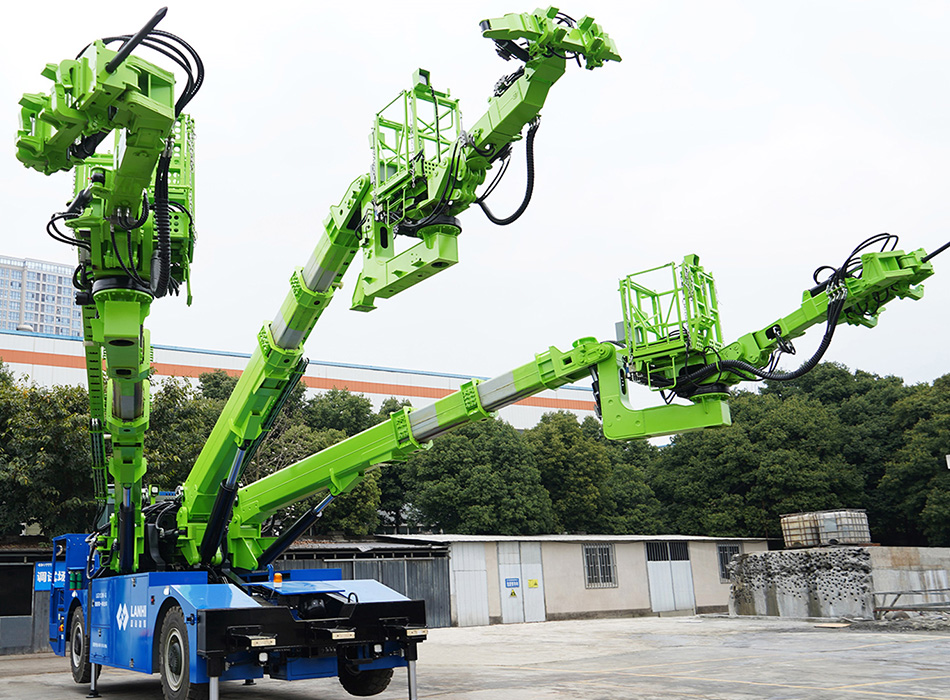The arch trolley (also known as a multi-functional tunnel arch installation trolley) is a specialized mechanical device used in tunnel construction for installing steel arches, laying steel mesh, and assisting with high-altitude operations. It replaces traditional manual labor with mechanized operations, significantly improving construction safety and efficiency.

I. Core Functions:
1. Steel Arch Installation: Precisely locates and rapidly erects the tunnel support framework to control surrounding rock deformation and prevent collapse.
2. Steel Mesh Laying: Secures the mesh to distribute ground stress and enhance lining stability.
3. Multifunctional Integration:
① Anchor bolt installation, connecting bar welding, and system anchor bolting;
② Tunnel undercut treatment, face clearance, and blasting and charging assistance;
③ Quality inspection, air and water pipe installation, grouting repairs, and other high-altitude operations.
II. Core Structure and Highlights
The arch installation trolley typically consists of a chassis, hydraulic outriggers, a multi-stage telescopic boom, a mechanical gripper, and a work platform. Key technological breakthroughs include:
1. Multi-arm collaborative design:
① Three-arm structure (such as the Xintong GK3 model): The main arm grabs the arch frame, while the auxiliary arm simultaneously welds or installs anchor bolts. Installation of a single arch frame takes only 20-30 minutes.
② Gravity-adaptive manipulator: Automatically clamps the arch frame, eliminating the need for manual feeding and reducing the risk of falls.
2. Power and maneuverability:
① Diesel-electric dual-power system: Adapts to environmental requirements in tunnels (zero emissions in electric mode) and unstable power conditions.
② Four-wheel steering/tracked chassis: Ensures maneuverability on complex roads and narrow tunnels (such as mine shafts).
3. Intelligent operation and safety protection:
① Wireless remote control + 360° self-balancing platform: Keeps workers away from the tunnel face, improving safety during high-altitude operations.
② Scissor-type lift platform + hydraulic winch mechanism: Expands the operating range and supports multi-angle construction.
III. Application Scenarios and Construction Advantages
1. Applicable Project Types
① Transportation Tunnels: Supporting weak surrounding rock sections in railways, highways, subways, and other applications;
② Underground Projects: Hydropower Tunnels, Mining Roadways, and Underground Powerhouses;
③ Special Construction Conditions: Large-section Tunnels (Full-section/Step-type Construction) and Special-shaped Section Treatment.
2. Disruptive Advantages Compared to Traditional Manual Work
① Manpower Requirement: Traditional manual work requires 8-12 workers per team; the arch installation trolley requires only 4 operators.
② Single-frame Installation Time: Traditional manual work requires over 60 minutes; the arch installation trolley requires 20-30 minutes.
③ Safety: Traditional manual work carries a high risk of falling rocks and arch collapse; the arch installation trolley uses a remotely operated robotic arm, keeping workers away from danger zones.
④ Annual Cost Savings: 600,000-800,000 RMB per tunnel.
The arch installation trolley, through mechanization and intelligent technology, addresses the three major pain points of tunnel support operations: safety, efficiency, and cost, becoming a core piece of equipment in modern tunnel construction. With evolving technologies (such as multi-arm coordination and diesel-electric dual-power) and expanding application scenarios (from transportation tunnels to mining tunnels), its integrated and environmentally friendly features will continue to drive tunnel construction toward the goals of "reduced manpower, high precision, and zero accidents."





